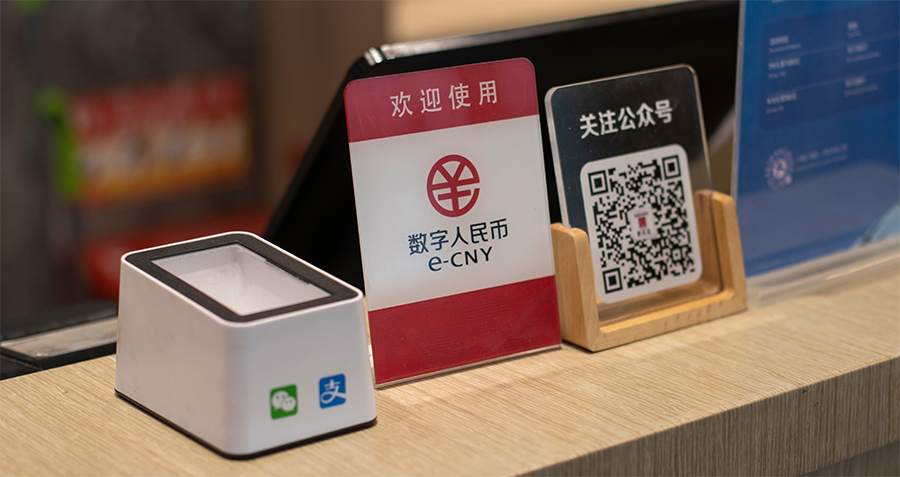China-focused incubators such as InnoSpring and zPark Venture are all trying to bridge the gap between China and Silicon Valley—but in different ways and with different results.
The walls of the lobby are decorated with a smattering of colorful logos. Rows of chairs are neatly laid out, ready for presentations in what is known as “Demo Day”. Just last week, this arena hosted Adam Cheyer, creator of iPhone’s voice navigator Siri, who discussed his entrepreneurial experience.
Welcome to InnoSpring, the first China-focused incubator in Silicon Valley. Looking at the office space alone, it would be difficult to distinguish this incubator from a California native. But upon a closer look at the company’s brochure, one then sees, written in Chinese, its global ambition for Silicon Valley start-ups.
In theory, China-focused incubators such as InnoSpring set out to fill a geographical and cultural gap between innovative Silicon Valley and visionary Chinese investors. The pursuit of this ideal is reinforced by the combination of China’s growing capital flows, existing manufacturing abilities, and an emerging middle class.
Like their American counterparts, Chinese incubators provide seed funding, offer consulting services, introduce venture capital, and build a community—physical or virtual—for fledging companies with big ideas. The incubators set a time frame for start-ups, usually six months, after which a Demo Day is hosted for outside investors to judge and pick some from the assembled companies for further financing.
Structurally, the Chinese aspect of these incubators mainly lies in their financial backbone. Their funding is sourced either from China or US-based subsidiaries of Chinese companies.(InnoSpring, however, is an exception to this norm as it is also funded by Silicon Valley Bank, a non-Chinese entity.) In addition to the conventional model of guiding, packaging and funding seed companies, Chinese incubators aspire to differentiate themselves in the US by channeling Silicon Valley ideas to China’s vast but sometimes difficult-to-navigate market.
At the first glance, the concept of a Chinese incubator seems simple: to forge a happy marriage between the Chinese market and American talent. InnoSpring is the first of its kind. Since InnoSpring settled in Silicon Valley in 2012, a few others have followed suit. zPark Venture, partnered with Hanhai Investment, a company well-versed in start-up incubation in China, and set up an incubator in downtown Palo Alto. TIPark Silicon Valley, a joint investment of Tsinghua Holdings Company from Beijing’s Haidian district, also openly welcomes US-China start-ups.
After setting up Innovation Works, a Silicon Valley style incubator in China, former China Google Chief Kai-Fu Lee reverse-engineered the concept of the Chinese incubator by dispatching a senior partner back to the Bay Area. The lone ambassador, Chris Evdemon, armed with a $10 million seed funding, is currently scouting for investment opportunities in start-ups that want to tap into China.
Regardless of the success of these incubators, none have been able to achieve the scale of regular Silicon Valley incubators, especially the industry leader Y Combinator. So far, Chinese incubators haven’t created a monumental success story like Airbnb, Reddit, or Dropbox (all Y Combinator alums), each of which is valued in the billions of dollars. As the initial euphoria of US-Chinese collaboration fades, these incubators would need to reflect on the nuances and complexity of Silicon Valley.
The Cautiously Optimistic Pioneer
Located next to the headquarters of Citrix and Dell, InnoSpring’s 13,500 square-foot office is strategically located in the heart of Silicon Valley. There, Xiao Wang, CEO of InnoSpring since 2013, lays out the founding members’ vision. “We have a group of very established venture capital [companies] backing us,” Wang says. “This investment-guaranteed model is part of the reason that made Y Combinator successful.”
Wang, who prefers the title ‘Chief Fire Starter’ to ‘Chief Executive Officer’, talks about working with experienced investors with a sharp eye for talent, while at the same time ‘diffusing’ sources of investment to mitigate risk. InnoSpring is supported by ventures carrying hefty clout in the area, including Silicon Valley Bank, GSR Ventures, and Northern Light Venture Capital.
InnoSpring has enjoyed a first-mover advantage in this niche. “As the market [of incubators and accelerators] began to saturate, we already [had] a closer integration of talent, tech and money,” she says. The incubator covers a multitude of industries ranging from clean energy to mobile application, and Wang says the company can afford to be more selective in these different sectors. In the tech world, early access is a luxury.
However, contrary to what one might expect in an incubator like InnoSpring, the actual proportion of China-oriented start-ups is surprisingly low. Out of the 57 seed companies inside the spacious office, only 20% embrace a China-oriented aspiration. There is one big success story: in October 2013, Baidu acquired InnoSpring-backed start-up Trustgo, a mobile security company that targets the consumer market, for $30 million. But this is only an exception, not the norm.
Most Chinese incubators tout the mantra of “bridging East with West”. Wang acknowledges that cross-border collaboration is the ultimate goal, but that the process leading up to it is long-winded. “We want to have a deep footprint in the US first, and that takes a long time, a decade perhaps.”
She adds that even Google, a multinational conglomerate, failed to gain a foothold in China’s market due to a lack of cultural understanding. So far, there isn’t a single “trusted and established platform” that helps US companies truly understand Chinese consumers.
Eventually, Wang hopes working between the two countries will become a “straightforward extension” of the incubator’s sphere of activities. . However, she adds that the incubator must be “very adaptive” for it to be sustainable.
In an under-explored territory, the first market entrant is often also the first one to make mistakes. Before the full potential of cross-border collaboration is realized, the team at InnoSpring must strike a careful balance between abiding by Silicon Valley norms and developing a unique sustainable competitive advantage.
The Skeptical Second Wave
In 2013, zPark Venture opened in a temporary office in downtown Palo Alto, in the same neighborhood where Google and PayPal started. Larry Li, co-founder and Managing Partner of zPark Venture, boasts of a cohort of locally-sourced mentors. “Our team of advisors consists of an early architect of Facebook, an experienced engineer at Google, and a senior executive at Yahoo,” Li says.
However, unlike InnoSpring’s Wang, who ultimately plans to facilitate a symbiotic relationship between businesses in the US and China, Li has a more cynical view in terms of simply attaching a China-orientation to an indigenous incubation structure. “Some Chinese incubators would want to ‘blindly imitate’ the success story of Y Combinator, but you must facilitate a process of organic growth in order to prosper here in the Bay Area,” Li emphasizes. “We are very much a Silicon Valley incubator.”
zPark has grown gradually. “Our current committee of advisors are selected and screened to be consistent with the company culture,” Li says proudly. “[Regarding the tech industry], they know what it takes and [they] know the trend; and they have deep insights of what’s next.”
zPark Venture is endorsed by Hanhai Investment Group, a company with over a decade of experience in start-up incubation in China. Li says it is only a “loose collaboration”. Overall, Li stresses his Silicon Valley ties are strong, while his connection to China is at best weak. Even as his incubator grows, the Chinese aspect may not go beyond financial cooperation.
Haotian Xu, who goes by Frank in the US, recently joined zPark Venture as a partner after establishing 21st Century Angel Capital in China. Xu takes Li’s perspective even further by proposing that even funds from China need to be repackaged in Silicon Valley ‘style’: not just the amount, but where investment funds come from matters a great deal to targeted seed companies. For them, there is a certain sense of familiarity and comfort working with locals, as opposed to facing the unknown terms and conditions attached to a foreign fund.
“Silicon Valley is a sensitive ecosystem,” says Xu. What he means is that one cannot simply introduce a non-native species here, in this case Chinese funding, venture capitalists (VCs), or incubators, and just expect it to grow healthily in this environment. For a Chinese incubator or accelerator, having means to funding is “necessary but insufficient” in a land where “investment is abundant”.
To succeed, the process of assimilation appears inevitable. zPark Venture plans to work with “mainstream organizations’ investment”, notably Google Ventures and Microsoft. The important takeaway, according to Xu, is understanding the macro-environment in which your organization exists. It is absolutely critical to be integrated into the culture of Silicon Valley instead of simply pumping in foreign funds and hoping to entice the best and brightest start-ups.
In addition, Xu proposes that incubators should focus on honing their unique competitive advantages, ones that are dynamic and difficult to replicate. This strategy entails cultivating a network and distinct knowledge of a very specific industry and sector. Whether it is betting on big data, hardware or mobile, the incubator must demonstrate an upper hand in relations to its competitors, and build synergy and organization around that model.
It’s All Very Well, But…
Eric Chen, Founder of Uj Ventures, a tech-focused seed stage fund based in Palo Alto, suggests that the challenges for Chinese incubators are not inherent in their organizational structure, but contextual in relation to Silicon Valley. Native to the Silicon Valley landscape, Chang understands the difficulties of setting up a profitable incubator. A vast majority of incubators and accelerators, Chinese or otherwise, do not make any money.
“Unfortunately, it is a winner-take-all situation here for early-stage incubation,” Chang says. The winner is, of course, the aforementioned Y Combinator, which continues to draw the best talent and most funding in Silicon Valley. In turn, Y Combinator has consistently yielded companies with valuation in the billions of dollars. “It is a virtuous or vicious cycle, depending on which side you are on,” Chang adds.
But the situation is not completely bleak, especially when one sees incubators as a non-profit, social enterprise. The value created from community-building might not be immediately salient. “The seed companies are put into a classroom-like setting, with an intense sense of competition,” he says. “That really motivates individual members to work hard.” Down the road, that work ethic might just pay off.
He also echoes Xu’s take on developing a competitive advantage by targeting certain industries, essentially “monopolizing a unit”. For example, it would be extremely useful if the incubator can link an existing manufacturing line in China with a group of hardware developers in Silicon Valley.
Chinese incubators can also cultivate a cultural advantage. For Chinese developers in the area, there is comfort and affinity to be found in Chinese communities. If a single incubator can manage to attract most of the Chinese talent within Silicon Valley’s 30-mile radius, there bound to be “the next Mark Zuckerberg” among them.
(To read about how incubators in China are faring, click here.)




















